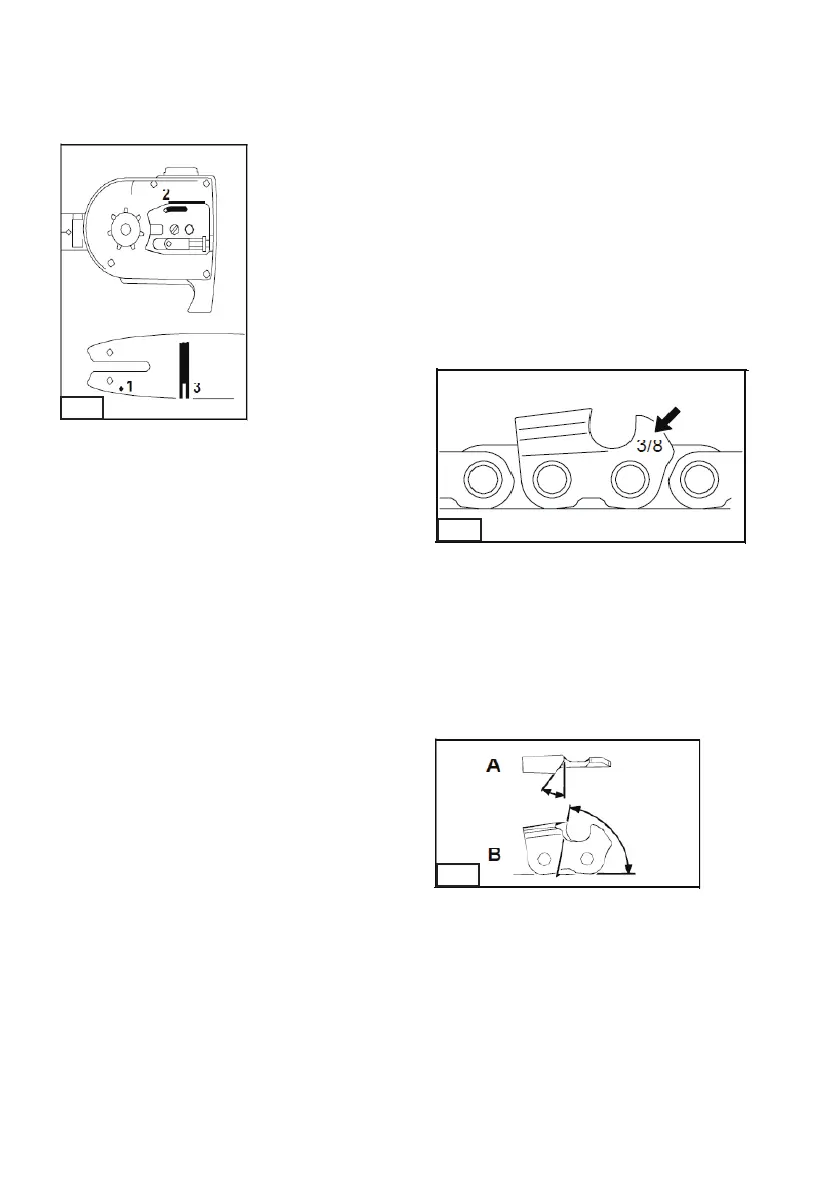35
Pay attention to the angles and dimensions given
below. If the saw chain is not properly sharpened
or the depth gauge is too small, there is a higher
risk of blowback eects and resulting injuries!
The saw chain cannot be xed on the guide rail. It
is therefore best to take the chain o the rail and
then sharpen it.
• Select a sharpening tool suitable for the chain
pitch. See "Technical data" for the approved chain
pitches.
The chain pitch (e.g., 3/8 ") is marked in the depth
gauge of each blade.
Use only special les for saw chains!
Other les have the wrong shape and the wrong
cut.
Select the diameter of the le according to your
chain pitch. Be sure to observe the following
angles when sharpening the chain’s blades.
A = ling angle
B = angle of the side plate
The angle must also be maintained for all knives.
In case of uneven angles, the chain will
run irregularly, wear out quickly and break
prematurely.
8.2.6 Care of the guide rail
• Turn over the rail each time you sharpen or
replace the chain. This will avoid one-sided wear
of the rail, especially at the top and bottom.
Clean the following regularly:
1 = the opening for the oil supply
2 = the oil channel
3 = the running groove of the rail
8.2.7 Maintenance and sharpening of the saw
chain
The properly sharpened chain
A properly sharpened chain goes eortlessly
through the wood and requires very little
pressure. Do not work with a dull or damaged saw
chain. It increases the physical eort, increases
the vibrations and leads to unsatisfactory results
and higher wear.
• Clean the chain.
• Check for breaks in the links and damaged
rivets.
• Replace damaged and worn chain parts with
matching spare parts, which you can trim to the
shape and size of the original parts if necessary.
• Sharpening a chain should only be done by
experienced users!
A29
A30
A31

